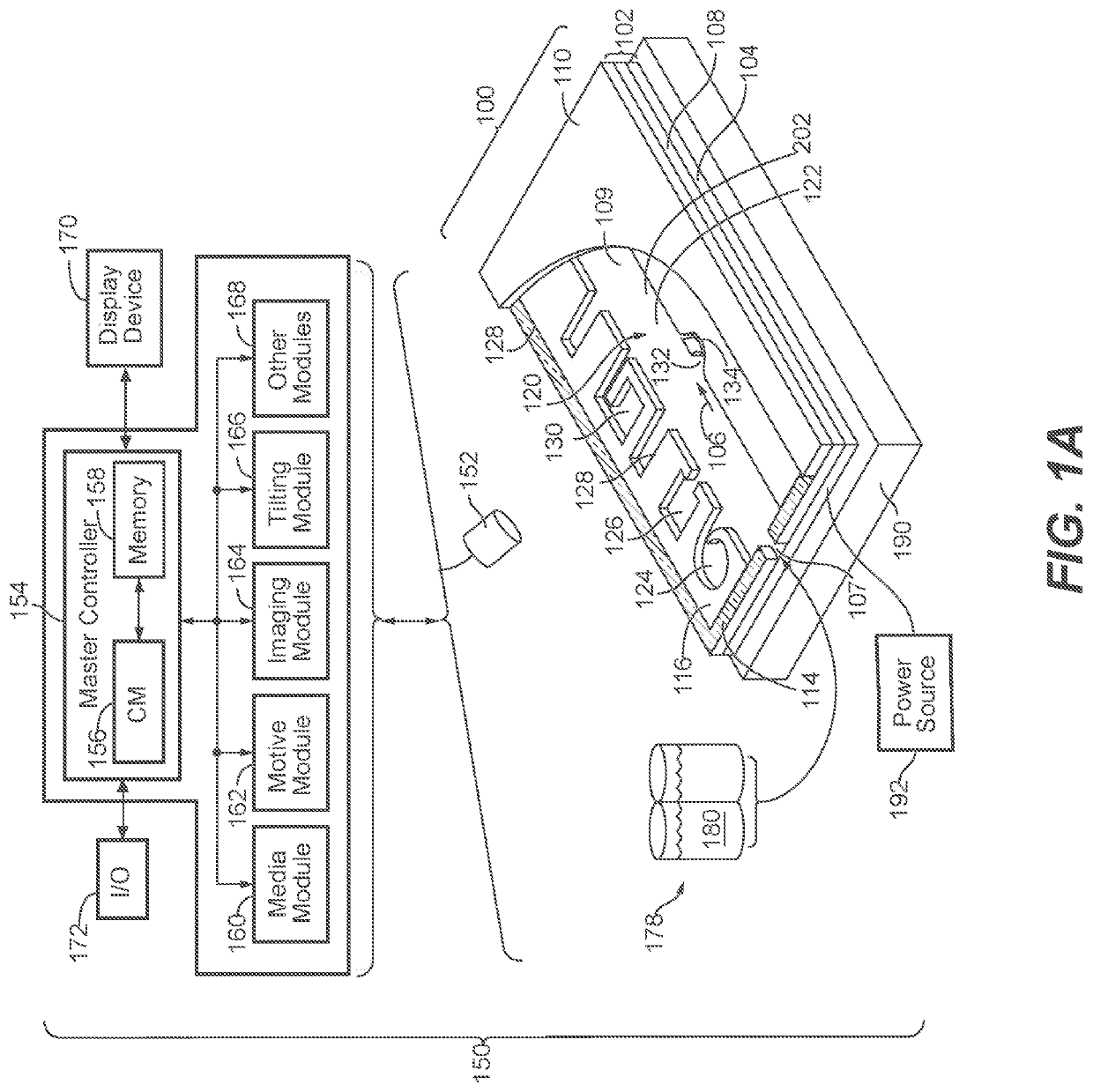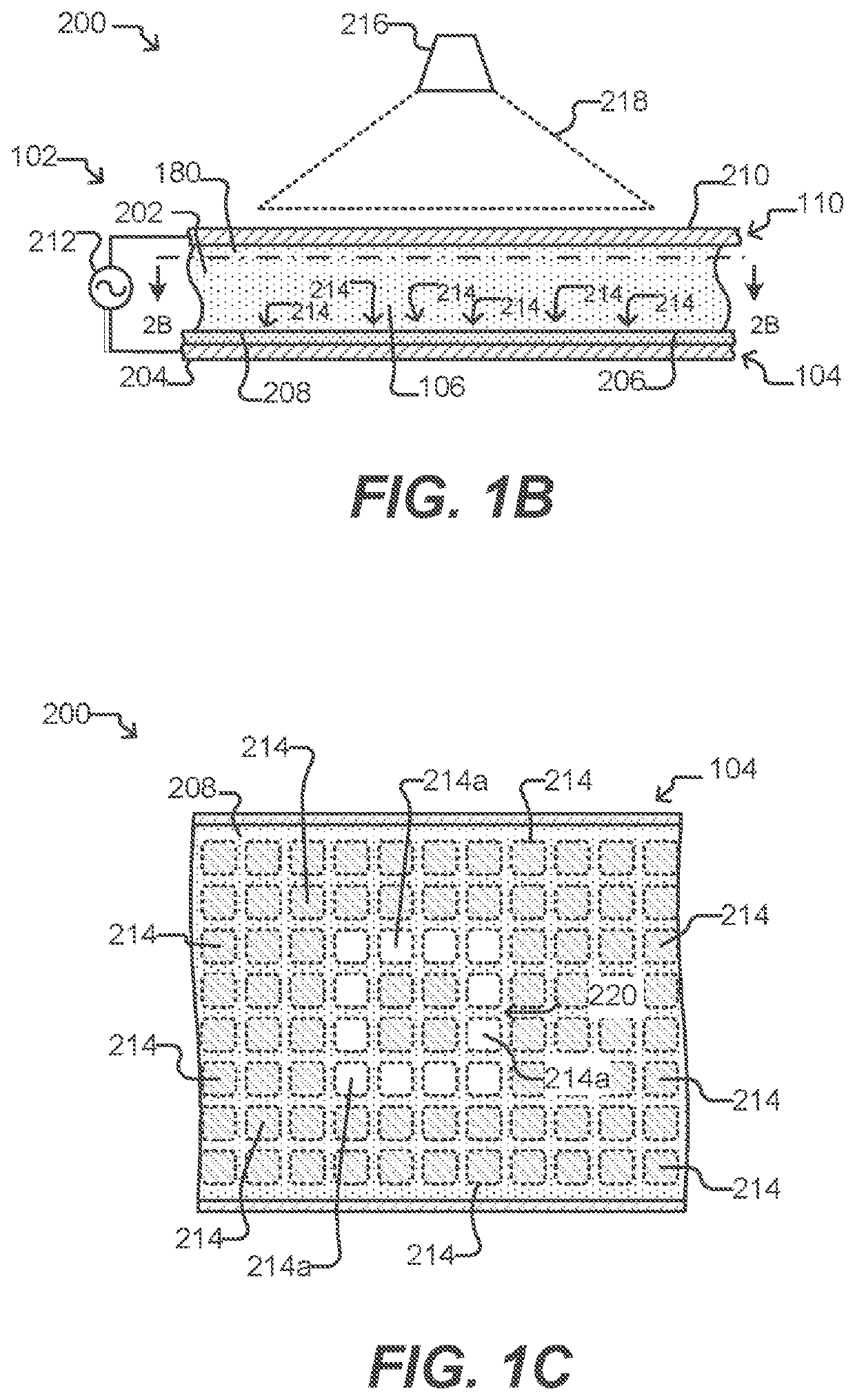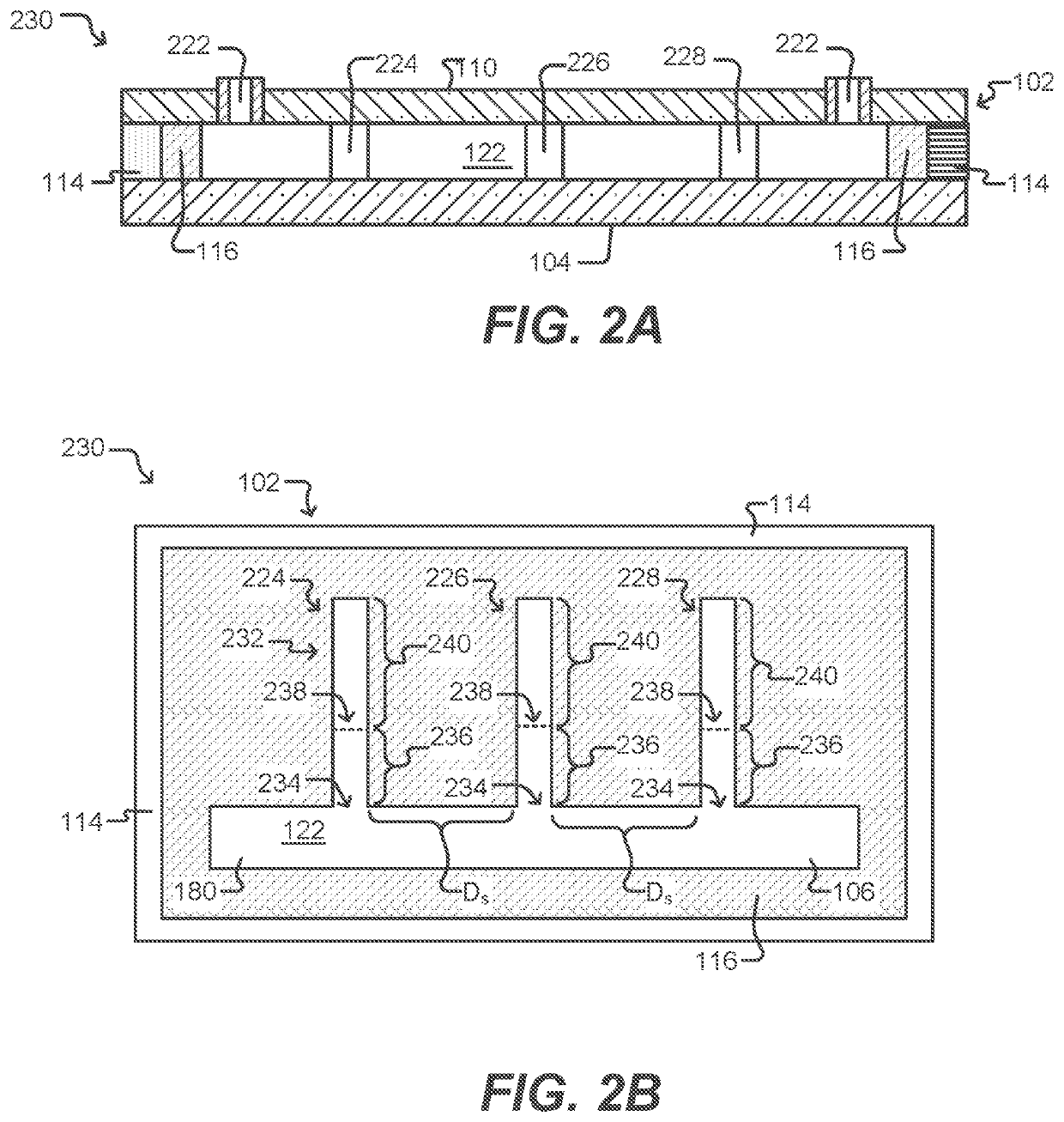Selection and Cloning of T Lymphocytes in a Microfluidic Device
a microfluidic device and t lymphocyte technology, applied in the field of selection and expansion of t lymphocytes, can solve the problems of lack of ex vivo expansion methods and therapies that still require further refinement, and achieve the effect of facilitating linkage of peptide-mhc complexes
- Summary
- Abstract
- Description
- Claims
- Application Information
AI Technical Summary
Benefits of technology
Problems solved by technology
Method used
Image
Examples
example 1
ell Expansion in an OptoSelect™ Chip
[0258]T cell expansion was achieved within an OptoSelect chip, a nanofluidic device manufactured by Berkeley Lights, Inc. and controlled by an optical instrument which was also manufactured by Berkeley Lights, Inc. The instrument included: a mounting stage for the chip coupled to a temperature controller; a pump and fluid medium conditioning component; and an optical train including a camera and a structured light source suitable for activating phototransistors within the chip. The OptoSelect™ chip included a substrate configured with OptoElectroPositioning (OEP™) technology, which provides a phototransistor-activated OET force. The chip also included a plurality of microfluidic channels, each having a plurality of NanoPen™ chambers (or sequestration pens) fluidically connected thereto. The volume of each sequestration pen was around 1×106 cubic microns.
[0259]CD3+ human T lymphocytes isolated from peripheral blood were mixed with anti-CD3 / anti-CD2...
example 2
Expansion of Human T Cells in an OptoSelect™ Chip
[0264]T cell expansion was achieved within an OptoSelect chip (Berkeley Lights, Inc.), which was controlled by an optical instrument also manufactured by Berkeley Lights, Inc., as described in Example 1.
[0265]Initially, human CD14+ monocytes isolated from peripheral blood were cultured for 7 days in DC culture medium (RPMI, 10% FBS, 2% Human AB serum, 100 ng / ml GM-CSF, 50 ng / ml IL-4; R&D Systems) to promote differentiation of dendritic cells (DCs). 250 μg / ml LPS (R&D Systems) was added to the culture medium during the last 2 days of culture to promote DC activation.
[0266]Allogeneic donor T lymphocytes were mixed with DCs from the foregoing culture at a ratio of ˜10 T cells / 1 DC and incubated for 5 hours in a 5% CO2 incubator at 37° C. Following the incubation, the T cells / DCs mixture was resuspended, then flowed through a fluidic inlet and into the microfluidic channels within the chip. The flow was stopped and T cells / DCs were random...
example 3
pecific Expansion of Human T Cells in an OptoSelect™ Chip
[0271]T cell expansion was achieved within an OptoSelect chip (Berkeley Lights, Inc.), which was controlled by an optical instrument also manufactured by Berkeley Lights, Inc., as described in Example 1.
[0272]Initially, human CD14+ monocytes isolated from peripheral blood were cultured for 7 days in DC culture medium (RPMI, 10% FBS, 2% Human AB serum, 100 ng / ml GM-CSF, 50 ng / ml IL-4; R&D Systems) to promote differentiation of dendritic cells (DCs). 250 μg / ml LPS (R&D Systems) was added to the culture medium during the last 2 days of culture to promote DC activation. At the same time as the addition of the LPS, the DCs were also pulsed with 10 μM Tetanus toxin (TT) antigen (Sigma-Aldrich Co.) and 10 μM Epstein Barr Virus (EBV) antigen (EastCoast Bio, Inc.).
[0273]Autologous donor T lymphocytes were mixed with TT- and EBV-pulsed DCs from the foregoing culture at a ratio of ˜10 T cells / 1 DC and incubated for 5 hours in a 5% CO2 in...
PUM
| Property | Measurement | Unit |
|---|---|---|
| volume | aaaaa | aaaaa |
| width Wcon | aaaaa | aaaaa |
| volume | aaaaa | aaaaa |
Abstract
Description
Claims
Application Information
 Login to View More
Login to View More - R&D
- Intellectual Property
- Life Sciences
- Materials
- Tech Scout
- Unparalleled Data Quality
- Higher Quality Content
- 60% Fewer Hallucinations
Browse by: Latest US Patents, China's latest patents, Technical Efficacy Thesaurus, Application Domain, Technology Topic, Popular Technical Reports.
© 2025 PatSnap. All rights reserved.Legal|Privacy policy|Modern Slavery Act Transparency Statement|Sitemap|About US| Contact US: help@patsnap.com



